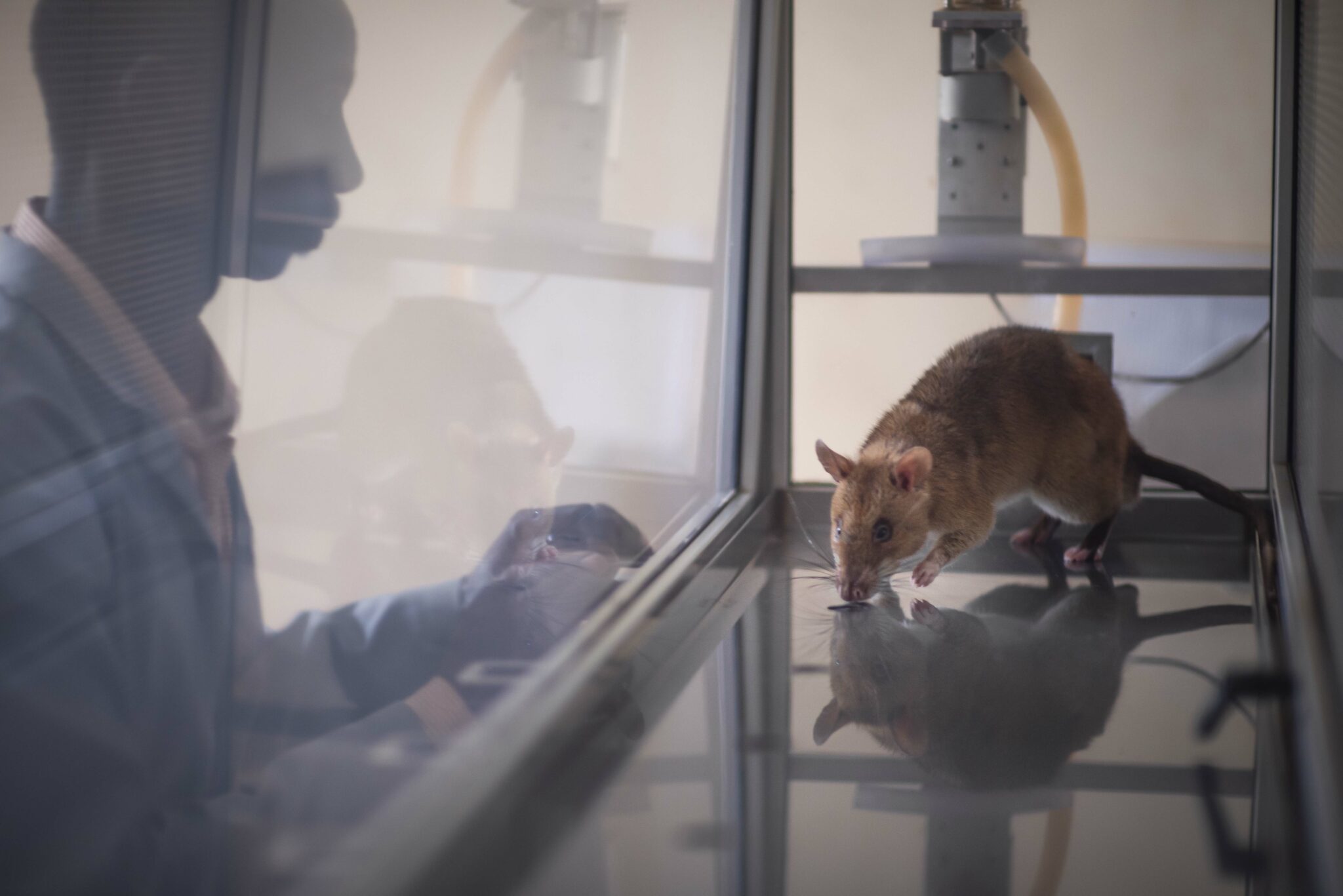In a recent publication, APOPO, renowned for its landmine and tuberculosis detection rats, has now demonstrated a potential new use for its clever rodents: detecting the bacteria that causes Brucellosis. The Brucella bacteria can be transmitted from animals to humans, posing a significant health and economic risk in regions across the world.
The study is a promising first step towards developing new screening methods for Brucellosis, although further research, and crucial additional funding, is still required before findings can be implemented in real world scenarios.

Partnering with the Sokoine University of Agriculture’s College of Veterinary Medicine and Biomedical Sciences, APOPO’s latest study harnesses the rats’ extraordinary sense of smell to detect a common strain of the Brucella bacteria, a feat that could have substantial implications for Sub-Saharan Africa.
Brucellosis is a zoonotic disease that affects livestock and humans alike, leading to fever, joint pain, and fatigue. The disease reduces the productivity of affected livestock and farming incomes often shrink as a result.
Enter APOPO’s African giant pouched rats (Cricetomys ansorgei), aka HeroRATs, which after just three months of training, have shown they can sniff out Brucella bacteria with impressive accuracy. Our detection rats were able to consistently identify the Brucella bacteria while dismissing negative samples, even when presented with complex samples containing other types of bacteria.
In humans, most cases of Brucellosis are caused by consuming contaminated milk or other dairy products. A crucial step in preventing human infection is milk pasteurization. Detecting Brucella bacteria is a challenge: traditional methods are often costly, time-consuming, and not readily accessible in resource-limited settings.

Under the leadership of Dr. Cindy Fast, APOPO’s Head of Training and Innovation, the trained rats learned to identify the unique scent profile of Brucella bacteria from among a range of different smells. The key to this bio-detection lies in volatile organic compounds (VOCs), the microscopic scent particles that every living organism emits. Based on this study, Brucella is believed to have a distinguishable VOC signature, which the rats learned to recognize. Detecting VOCs is like picking out a single scent in a perfume shop—it requires an olfactory system that is highly sensitive and discerning, exactly like that of APOPO’s HeroRATs.
However, before our rats can be deployed in the field, researchers need to confirm that they can detect Brucella in a range of real-world scenarios and sample types, not just in the controlled setting of a lab. This additional research would be crucial for the potential application of rat-based detection in Brucellosis screening programs.
Following further research and funding, and if proven effective in field conditions, APOPO’s rats could potentially provide a quick and cost-effective method for early detection of Brucellosis, perhaps even before symptoms appear in livestock or humans. This could be a game-changer for disease management, particularly in areas where Brucellosis is prevalent but resources for comprehensive testing are scarce.
Read the full study here: Scent detection of Brucella abortus by African giant pouched rats (Cricetomys ansorgei)


